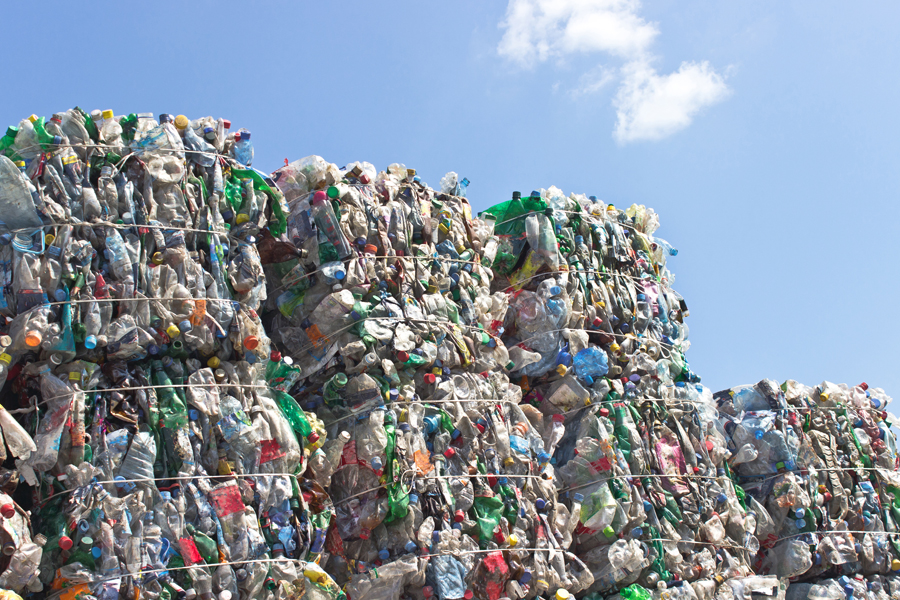
Waste-management firms have a plastics problem
This op-ed was originally published by iPolitics on September 14, 2021.
Canada has a waste problem.
We lead the world in the generation of solid waste per capita. Plastic waste pollution is one of the seminal environmental issues of our time. On this front, our performance has been poor. Only a quarter of plastic waste is collected, with just nine per cent being recycled. The “take-make-waste” paradigm of our linear plastics economy is unsustainable. A reset is overdue.
A circular plastics economy is the new standard. This regenerative economy harnesses natural resources sustainably, eliminates waste by design, while accelerating reuse, recycling and innovative business models with minimal environmental and social drawbacks. But none of these benefits matter if plastic waste is not collected and sustainably re-introduced into the economy. This is where waste management firms hold sway.
The impact of profit in waste management
Waste management firms exert considerable influence over the fate of plastic waste. Depending on contractual arrangements, they can determine if plastic waste is collected, sorted, recycled, landfilled or incinerated. The concentration of power in the waste management business in Canada and the U.S. makes these decisions largely the purview of a few select firms. The four largest waste management firms in Canada and the U.S had a combined revenue of US$34 billion in 2019. Comparatively, this is 70 times greater than the revenue of Canada’s plastic recyclers.
The profit motive of these publicly traded, multinational firms is a double-edged sword for the circular plastics economy. Collection is at the heart of the waste management business, and in 2019, it accounted for up to 75 per cent of revenue from the four major waste management firms. Collection also mitigates climate change. The International Energy Agency estimates that global plastic collection rates would need to triple for a net-zero-emissions economy to be achieved by 2050. The profit motive of waste management firms can steer Canada towards a circular and net-zero transformation.
Post-collection is where the profit-motive goes awry. Landfills are the second highest source of revenue for the big four – contributing up to a quarter of their income. Landfills are antithetical to a circular plastics economy. Apart from their adverse socio-economic impact on communities, they account for 20 per cent of Canada’s methane emissions – methane has 25 times the global warming potential of CO2.
Landfills are poised to be an unsustainable liability in the long-term, accompanied by increased reputational risks. Waste management firms need an accelerated transition to circular solutions. In this arena, plastics recycling holds promise as an investment proposition.
There is little evidence that the largest waste management firms are materially involved in the plastic recycling business i.e., the production of recycled plastic pellets or flakes. Material recovery facilities (MRFs) where plastics are sorted into bales and sold to recyclers and other consumers, is the limit of their involvement. MRFs play a critical role for plastic recycling, as it impacts the quality, availability and price of feedstock for recyclers.
The absence of the largest waste management firms in the plastics recycling business is primarily a business decision.
In Canada, plastics recycling has been plagued by demand uncertainty, uncompetitive pricing, policy fragmentation and a dependence on international markets. Plastic recycling investments were unattractive, but the tides are changing.
In recent years, contrary to historical trends, some recycled plastics have maintained a price premium over their unrecycled ‘virgin’ plastic counterparts. A demand boom for recycled plastics is occurring. In Canada and the U.S, recent commitments by leading consumer goods companies to use recycled plastics in their packaging, far exceeds current recycled plastics supply.
Governments are similarly taking action. Canada’s Ocean Plastics Charter has set a target to increase the recycled content of plastic products to 50 per cent by 2030. Furthermore, there is a growing need for self-reliance. China’s ban on plastic imports and the Basel Convention’s restrictions on international plastic waste trade, have encouraged governments in Canada to look closer to home for circular plastic solutions. These solutions require investments.
Where do we go from here?
The dominant waste management firms have the assets, economies of scale, feedstock and capital access needed to invest and scale plastic recycling to new heights. Investment incentives from governments can speed up capital deployment. In Canada, there is a disconnect between the magnitude of investment incentives for plastic producers relative to plastic recyclers. This needs to change. Additionally, governments must also bolster policies that disincentivize the operations of, and investments in, linear assets e.g., landfills.
The future of waste management is waste elimination. The circular plastics economy is a short-cut to this reality.





Comments